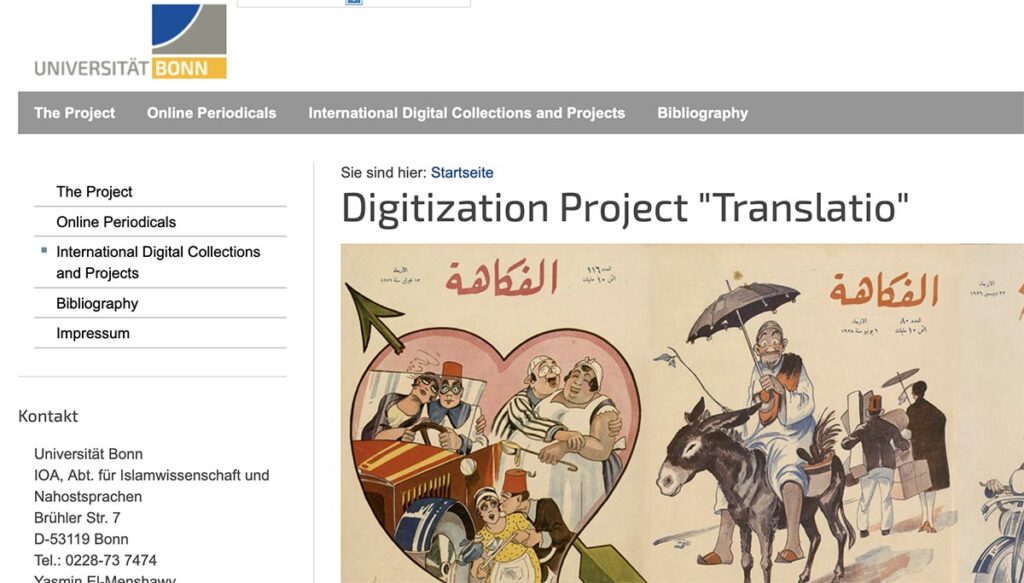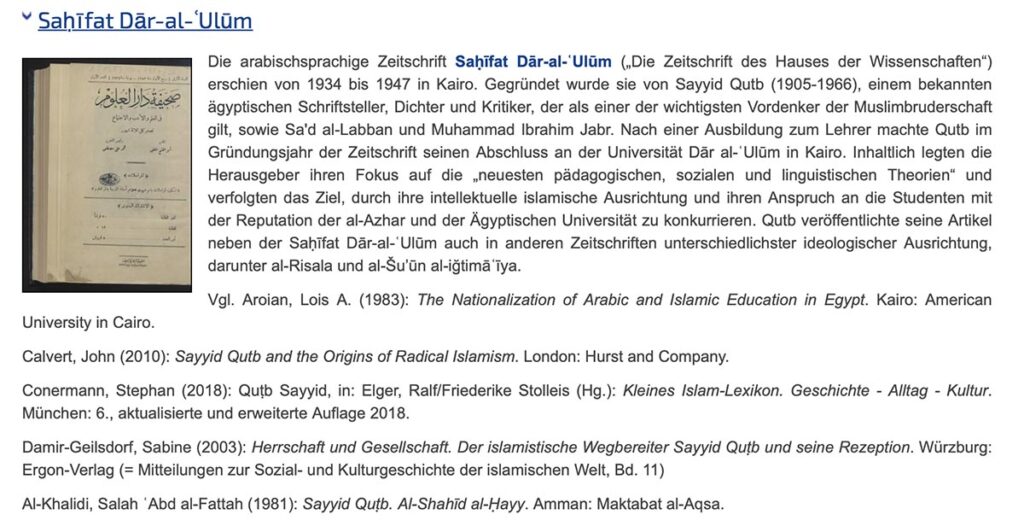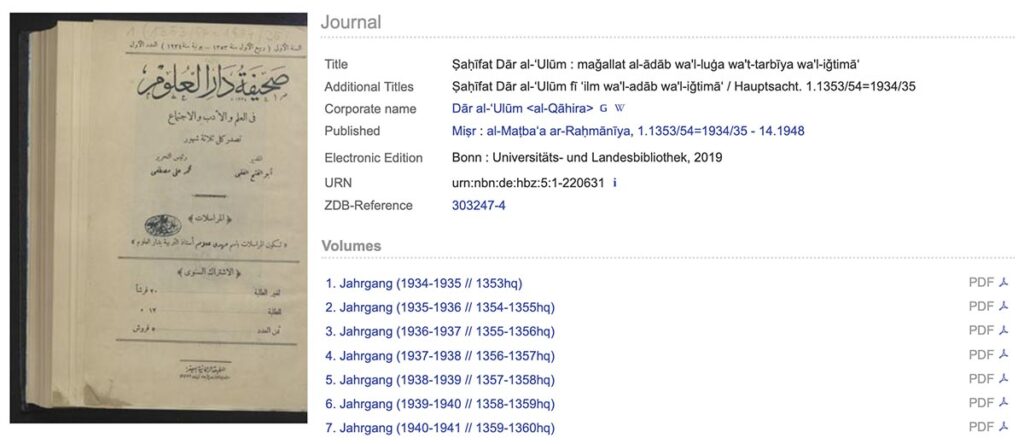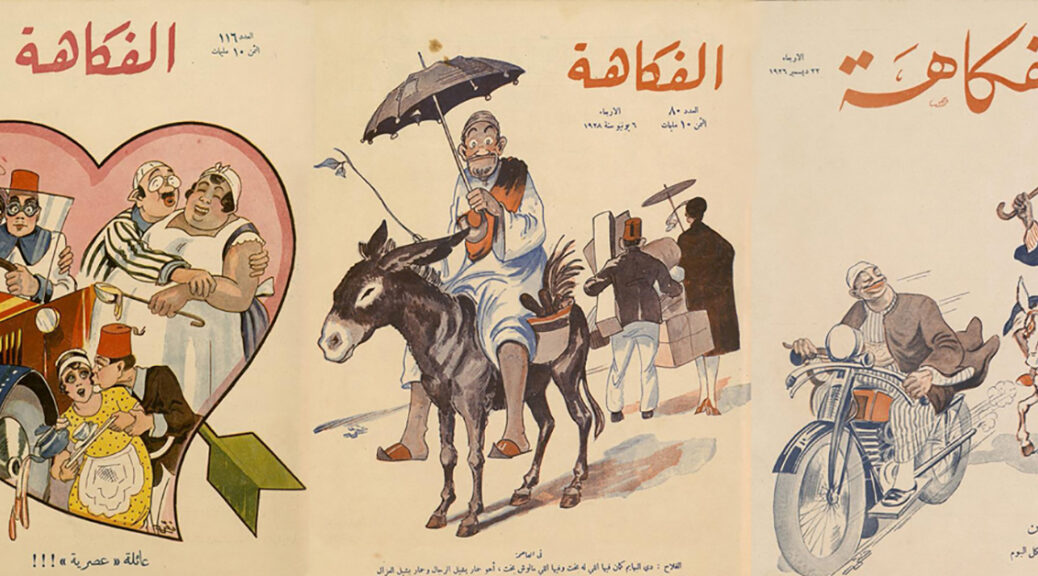Read, hot & digitized: Librarians and the digital scholarship they love — In this new series, librarians from UTL’s Arts, Humanities and Global Studies Engagement Team briefly present, explore and critique existing examples of digital scholarship. Our hope is that these monthly reviews will inspire critical reflection of and future creative contributions to the growing fields of digital scholarship.

“Translatio” at the University of Bonn—a project of the Department of Islamic Studies and Middle Eastern Languages—seeks to make Arabic, Persian, and Ottoman Turkish periodicals published between 1860 and 1945 available online for free. The periodicals are selected from a number of partner institutions and digitized at the University of Bonn. The digital surrogates are then made available in a readable and downloadable version through the University’s digital collections website. “Translatio” strives, in its first phase, to focus on digitizing complete or mostly complete runs of periodicals (although it is evident that some of the titles are not nearly complete; UT Austin has acquired and is processing a complete set of al-Ḥurriyya, although there is only one volume extant in the “Translatio” database). The next phase will likely turn to less complete and single issues of periodicals that still bear cultural, historical, and research significance. The current collaborators include Bamberg University Library, Oriental Seminar of the University of Freiburg, Mainz University Library, Bavarian State Library Munich, Tübingen University Library, and the University of Bonn. Although “Translatio” is not a digital scholarship project in the conventional sense, it is still a novel gathering of digitized Middle Eastern periodicals that offers tantalizing opportunities for researchers engaged with traditional and digital methods.

Access to the digitized periodicals is quite user-friendly: they are organized by language group, and then alphabetically by title. Each title expands into a brief description of the periodical (in German), a short bibliography when available, and a link to the digital images. Transliteration follows the German standard, and metadata fields are indicated in German. Some understanding of German, therefore, is helpful for navigating the site and the contents of the periodicals (Google Translate, alone or via the Chrome browser, works well in this case). The metadata for each periodical is given at the title level, and users can click through individual issues to see issue-level metadata. The metadata does not include information on editors and authors, which would be desirable for researchers, but would also take an incredible amount of labor on the side of the project workers. This could be an area for future development.

As for the digital images of the periodicals: they can be downloaded in PDF or JPEG format and saved directly to the user’s device. The images are of adequate quality for researchers who wish to use them much like they would a microform newspaper, by scanning, browsing, and reading. However, the quality of many of the titles is not high enough to capture physical details of the ink or paper, and would not lend itself to optical character recognition (OCR). That is perhaps both the primary frustration and the arena of greatest possibility with this project: all of these digitized periodicals are begging to be put through OCR so that they may be full-text searchable and instrumentalized as a corpus for distant reading. That would certainly be a groundbreaking development for the field of Middle Eastern Studies.

It is, nevertheless, significant that researchers have access to all of these excellent and important Middle Eastern periodicals in one place. Additionally—and this librarian’s favorite aspect of the project—the project website includes a clearinghouse of digital Middle Eastern periodicals collections from institutions around the world. Thus, Bonn’s digitized periodicals do not live in complete isolation from similar efforts on the web; rather, one can use the “Translatio” website as a starting place for research across a number of related collections. Researchers using UT Libraries’ print collections have the opportunity to interact with some of these titles in person as well, including al-Balāgh al-ʿUsbūʿī, al-Bayān, and Sharq, among others. The next step in the evolution of the relationships among these collections would be a federated search across all of them simultaneously—and this librarian would love to see a digital reading interface that observes the right-to-left directionality of all three languages in this project—but let’s take this one step at a time. The “Translatio” team at Bonn has much to celebrate.

